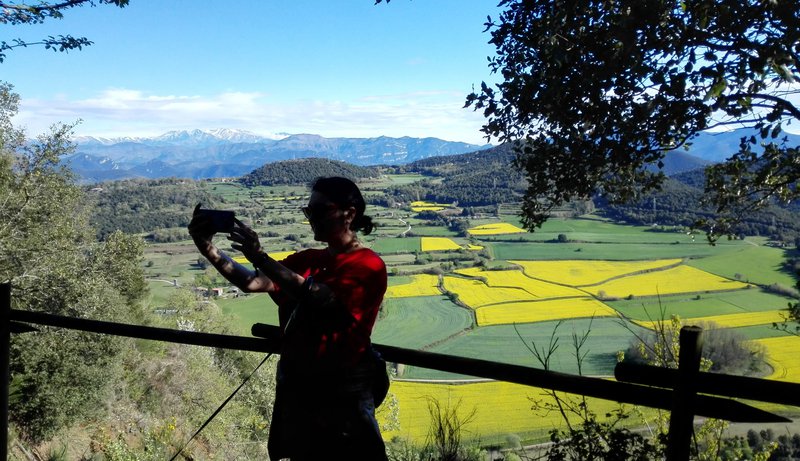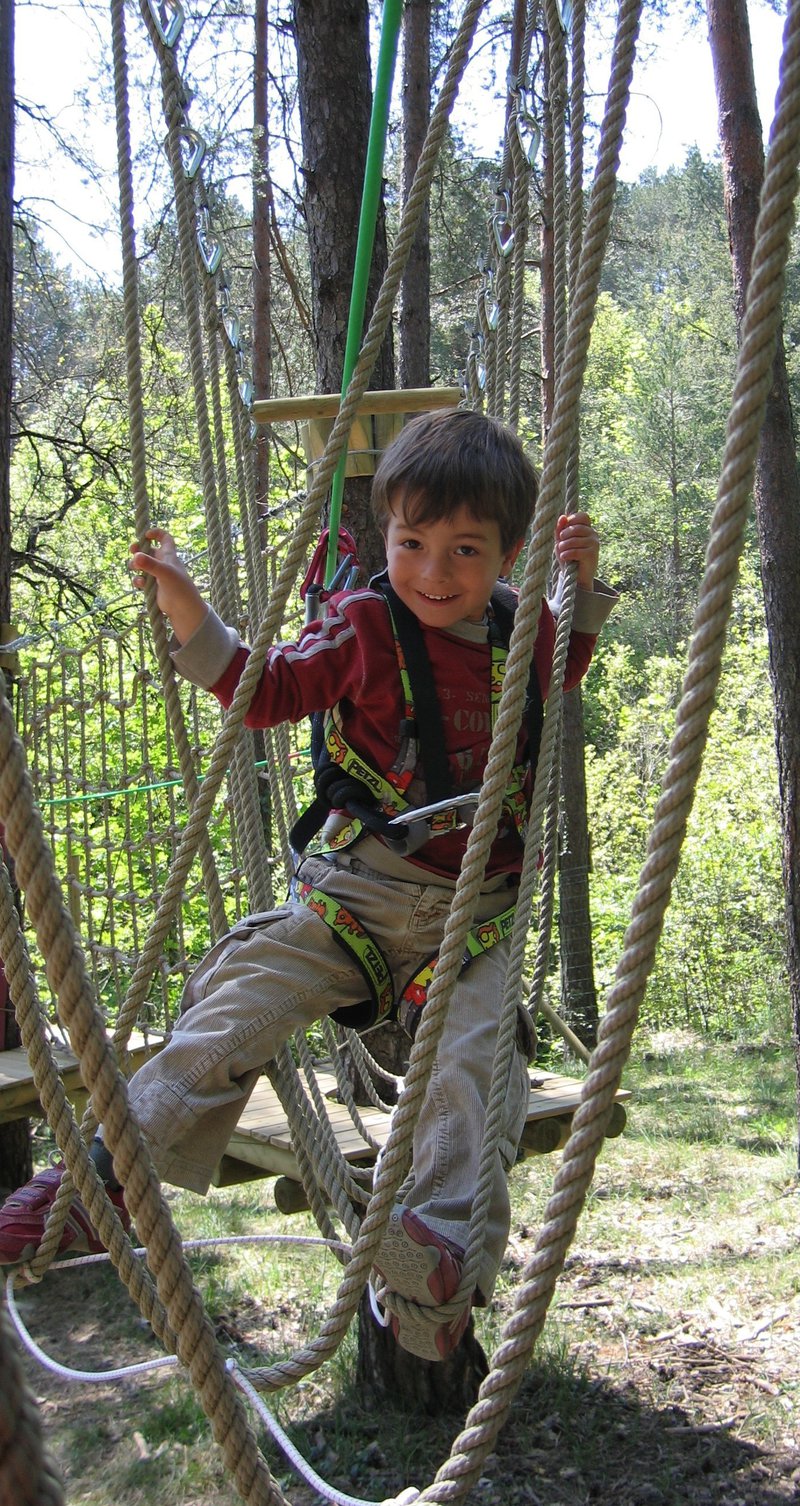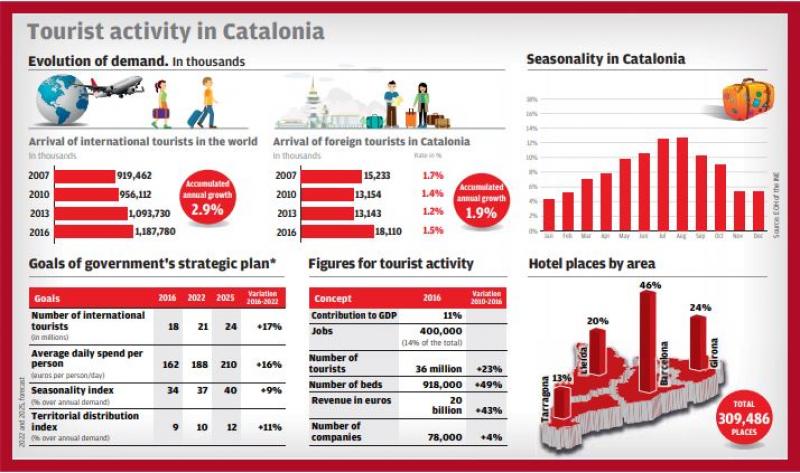Quality TOURISM
Boosting innovative initiatives across Catalonia to attract more visitors throughout the year is one of the goals of the government’s latest strategic plan for the sector
Thyme soup is a traditional dish made with the common herb that can be picked at the side of the road. It is an example of a cuisine deeply-rooted in a tradition of making the most of ingredients to be found all around us. This is what biologist Evarist March explains during Vacances entre herbes (Holidays among herbs), organised by the company he heads, Naturalwalks. “We go somewhere that’s a bit forgotten,” he says, “to the Fosca valley, in Pallars, to teach people about Pyrenean culture, and every day we go on a brief thematic itinerary to learn about the local herbs, flowers, fruits and seeds and their traditional uses in medicines or cuisine.” Every afternoon is spent using what was gathered to make a remedy, soap, liqueur or recipe.
Naturalwalks’ aim is to show the local culture through its natural elements. “The idea is to make Catalonia known from a different point of view,” says March. Naturalwalks was founded eight years ago with the aim of reaching out to “people who are cultured with a capital C.” “Our clients are interested in eco-tourism,” says March. The agency works with the premium tourist segment, above all in the US, which is “the market with the most clients prepared to pay more for innovative experiences.”
Encouraging this type of project to attract more tourists, especially those with more purchasing power, is one measure in the strategic plan the government recently put forward. “Offering a broad range of experiences with their own personality” to attract tourists is one of seven key strategies, which aim to raise daily spending by visitors, encourage more visitors in spring and autumn, and increase the number of bookings in inland areas. Over four years, the goal is to raise the number of foreign visitors from 19 million to 21 million. Octavi Bono, head of the Catalan Ministry of Tourism, says it is inevitable that activity in the sector is tied to the time of year, but the aim is to “smooth out” the differences. International markets where people take holidays throughout the year are a key target.
The plan aims to attract more visitors from Germany, France, the UK, northern Europe, Russia and the US, while also diversifying tourism across Catalonia. An example is an itinerary being prepared called the Grand Tour of Catalonia, which will cover the whole country in less than 10 days and provides “high quality services and personalised attention.” This is part of the 2018-2022 tourist marketing plan, which runs alongside the strategic plan. “We have to create new initiatives,” says Bono, who adds that the idea of touring is well-established in some places, such as Croatia or Tuscany, and that this type of holiday is ideal for Catalonia, given its characteristics. “Here the tourist is more sedentary, and stays in one place on the coast or in Barcelona”, Bono says.
Both the strategic and marketing plans are based on the premise of encouraging sustainable environmental development and “promoting a more harmonious link between tourism and the public.” Successful initiatives, such as the Garrotxa brand, show that growth can be sustainable while reinforcing this link. As the head of Garrotxa’s tourist office, Turina Serra, explains, Turisme Garrotxa is a private association that works with the public sector. The office was set up in 1996, when people visited Besalú, Santa Pau or Olot, but the county was not seen as a tourist destination. “We saw the chance to build a sustainable tourist model, which had to include economic development, although not at any price,” she says. In 2000, the Zona Volcànica natural park joined a scheme in the European Charter for Sustainable Tourism. Since 2001, the whole Garrotxa area has been included, working with public-private partnerships. “We know what we have to offer to achieve the demand we want,” says Serra, who highlights initiatives such as the network of signposted footpaths that allows visitors to walk from town to town. Other initiatives include Garrotxa Cultour, which has medieval and modernist itineraries, and Cuina Volcànica, which promotes local cuisine.
Boosting brands
Developing new brands is also one of the plan’s strategies, although it is not easy to get all the players involved to pull in the same direction. Four years ago, Marc Blázquez and Judith Vidal left Barcelona for Berguedà. Today, they are the owners of Ca l’Andreu, a six-bedroom hotel with impressive views of Pedraforca mountain. “Here we are always full in summer and during the wild mushroom season, but it is tough the rest of the year, even though for the past five years local associations and the Berguedà tourist office have tried to boost tourism in the winter and spring.” The Baix del Pedraforca brand was created two and a half years ago, with local authorities, hotels and restaurants all signing up, but with the problem that local towns are not used to working together. “There are people who want to set up a business. Every now again someone tries to do it, but there aren’t enough. I think first the brand needs to be boosted and then people will set up more projects,” he concludes.
According to the strategic plan, attracting new investment is a priority. “There are places that are active,” says Bono, “but we have to find levers for the others.” The next step is a plan for sectors to find out where it makes sense to build new infrastructure and what its characteristics should be. And analysing the impact on the area, to learn from the past and not repeat the mistakes made.
feature
Forecasts for growth
Catalonia welcomes 19 million foreign visitors every year. The government’s strategic plan estimates that this figure could rise to 21 million by 2022. The forecast is not only about the absolute number of visitors, however. It also estimates that in that time average daily spending by each visitor can be increased, the number of visitors raised to 37% in spring and autumn, and that growth can be managed in a sustainable way.






